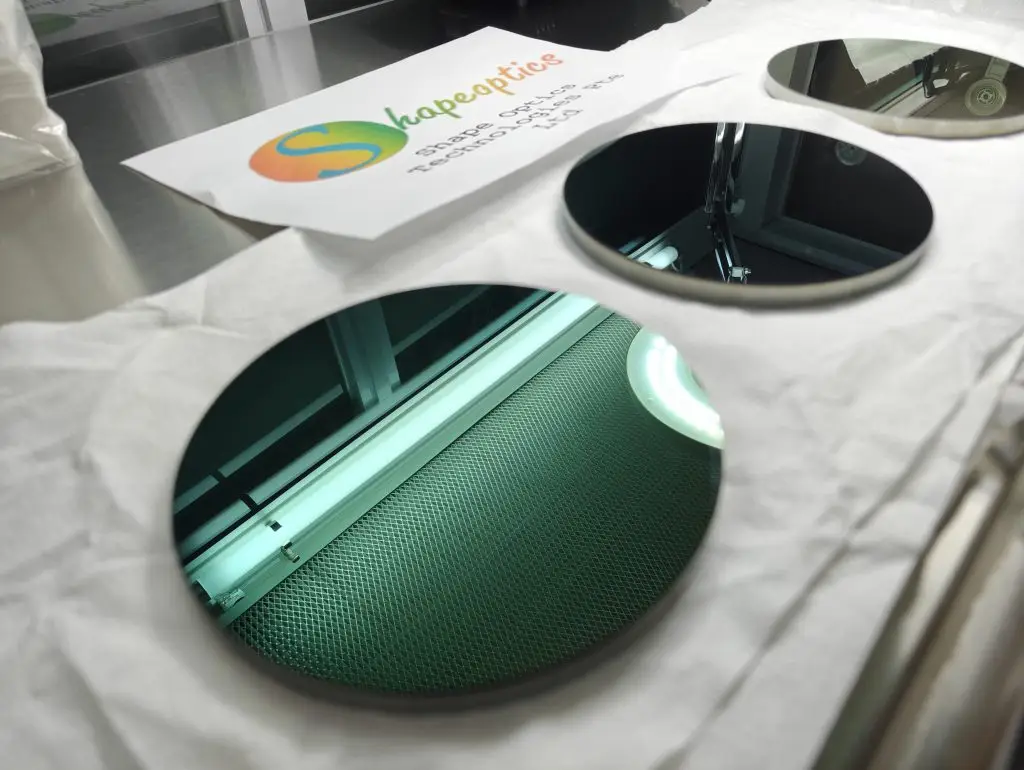Additional information
| Weight | 0.5 kg |
|---|---|
| Dimensions | 12 × 10 × 8 cm |
| Weight | 0.5 kg |
|---|---|
| Dimensions | 12 × 10 × 8 cm |
You must be logged in to post a review.

Here is the clearer plot of the typical transmission curve for a 1mm thick Germanium (mono-crystalline) window. The graph shows a sharp increase to 50% transmission starting from 2 µm and remains constant through 16 µm. This graph provides a visual representation of how the transmission behaves across the specified wavelength range.

This table details various physical properties of the material, which could include mechanical, thermal, and electrical characteristics, relevant for applications that require precise material specifications.

This table provides the refractive index of a material over the wavelength range from 2 micrometres to 14 micrometres, useful for applications requiring optical properties data at different IR spectrums.

This table presents various optical characteristics, including transmission spectrum, refractive index, and optical transmittance, which are crucial for understanding the performance of optical materials in specific applications, especially those involving precise wavelength requirements.
Shape Optics Diamond-Like Carbon (DLC) Coated Germanium Windows are crafted for robustness and longevity. These windows are equipped with a high-efficiency broadband anti-reflection coating on one side and a durable DLC coating on the opposite side, ensuring outstanding transmission and resistance to environmental conditions. The DLC-coated surface is engineered to endure extreme temperature fluctuations ranging from -80 to +160°F, continuous exposure to salt spray for 24 hours, salt solubility during a 24-hour immersion, and up to 5,000 wiper oscillations with a sand and slurry mixture. Moreover, ShapeOptics DLC Coated Germanium Windows comply with the MIL-C-675C standards for severe abrasion resistance.
Shape Optics offers Germanium (Ge) Windows with three options for anti-reflection coatings to cater to different infrared (IR) applications: a 3 – 5μm coating for mid-infrared use, a 3 – 12μm coating for broadband multispectral applications, and an 8 – 12μm coating for thermal imaging systems. Given germanium’s high index of refraction, approximately 4.0 across the 2 – 14μm wavelength range, applying an anti-reflection coating is crucial for achieving adequate transmission within the desired spectral region.

Typical transmission of a 3mm thick Ge window with BBAR (3000-5000nm) coating at 0° AOI. It indicates the coating design wavelength range, with the following specification: Ravg <3% @ 3000 - 5000nm

Typical transmission of a 3mm thick Ge window with BBAR (3000-12000nm) coating at 0° AOI. It indicates the coating design wavelength range, with the following specification: Ravg <5.0% @ 3 - 12μm

Typical transmission of a 3mm thick Ge window with BBAR (8000-12000nm) coating at 0° AOI. It indicates the coating design wavelength range, with the following specification: Ravg <3.0% @ 8 - 12μm
Germanium is prone to thermal runaway, a condition where its transmission efficiency declines as temperatures rise. Therefore, it is recommended to operate Shape Optics Germanium Windows at temperatures below 100°C to maintain optimal performance. Additionally, with a high density of 5.33 g/cm³, germanium windows should be carefully integrated into designs where weight sensitivity is a factor.
The material’s Knoop Hardness, at 780, is roughly double that of magnesium fluoride, making germanium windows exceptionally suitable for demanding IR applications where durable optics are essential.
Polycrystalline Germanium:
Monocrystalline Germanium:


N-type Germanium:
P-type Germanium:
| Feature | P-type | N-type |
|---|---|---|
| Dopant Elements | Boron, Gallium, Indium | Phosphorus, Arsenic, Antimony |
| Majority Charge Carriers | Holes | Electrons |
| Direction of Current Flow | Holes move to negative terminal | Electrons move to positive terminal |




We noticed you're visiting from Singapore. We've updated our prices to Singapore dollar for your shopping convenience. Use United States (US) dollar instead. Dismiss
Reviews
There are no reviews yet.